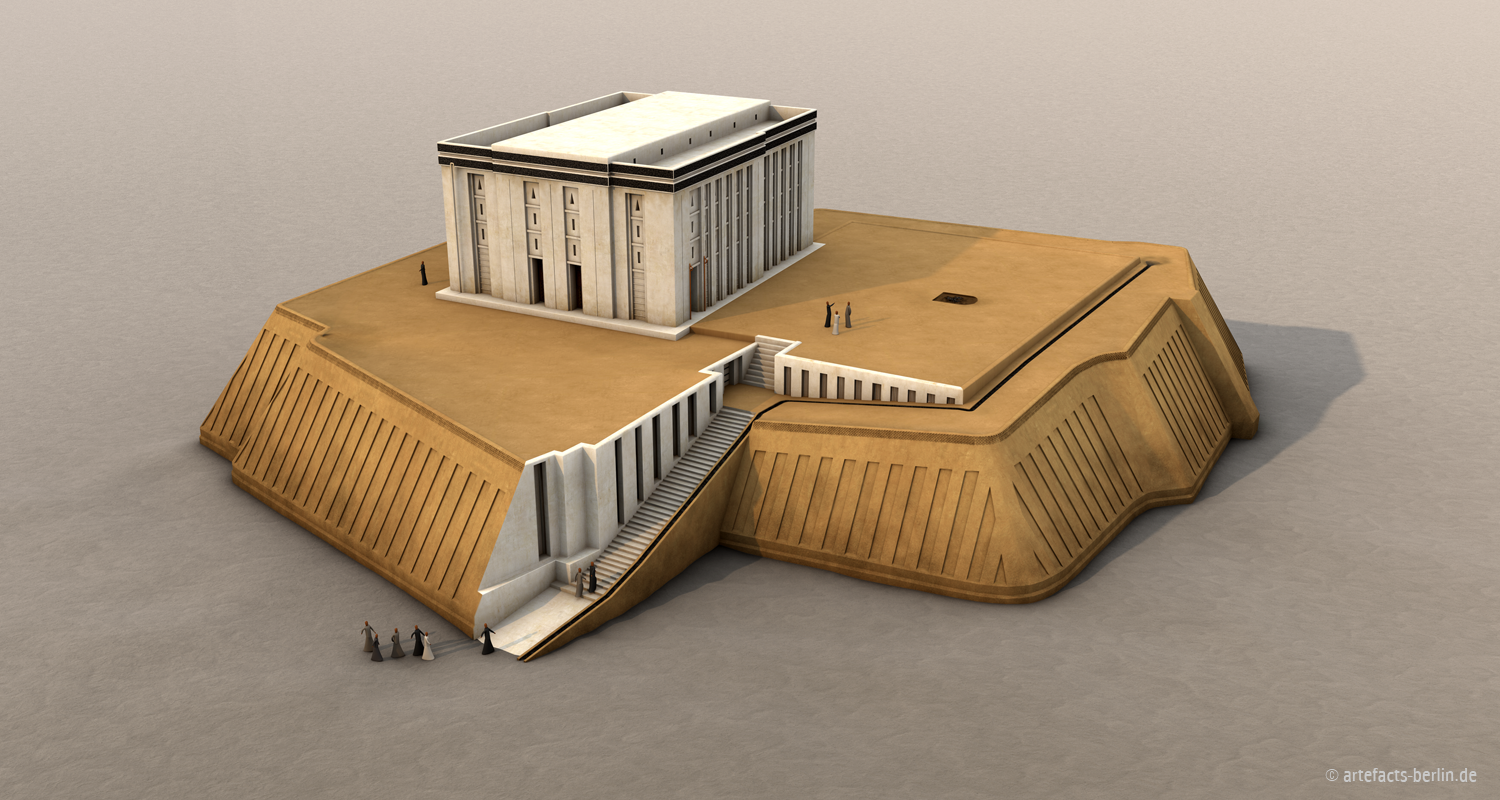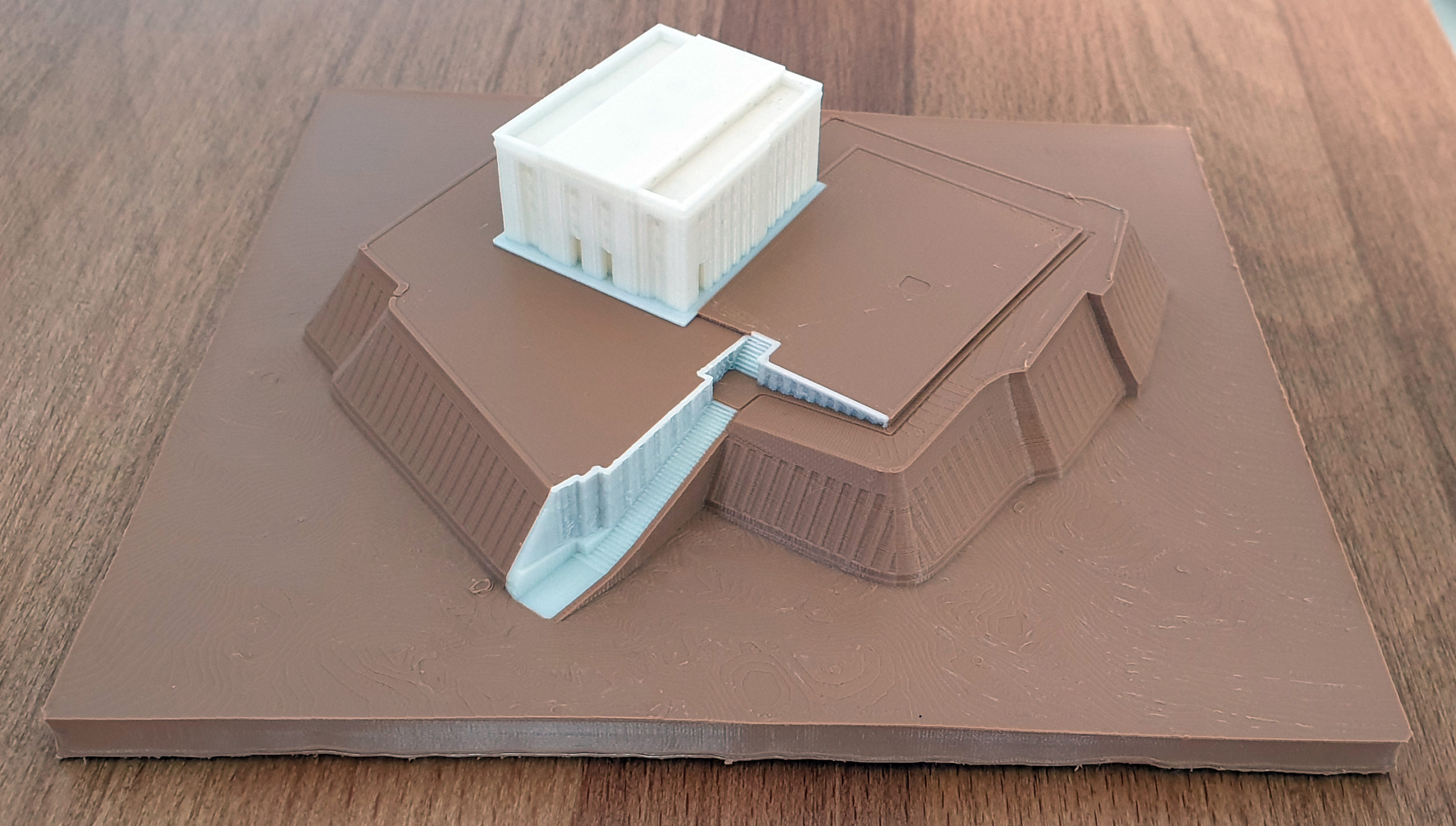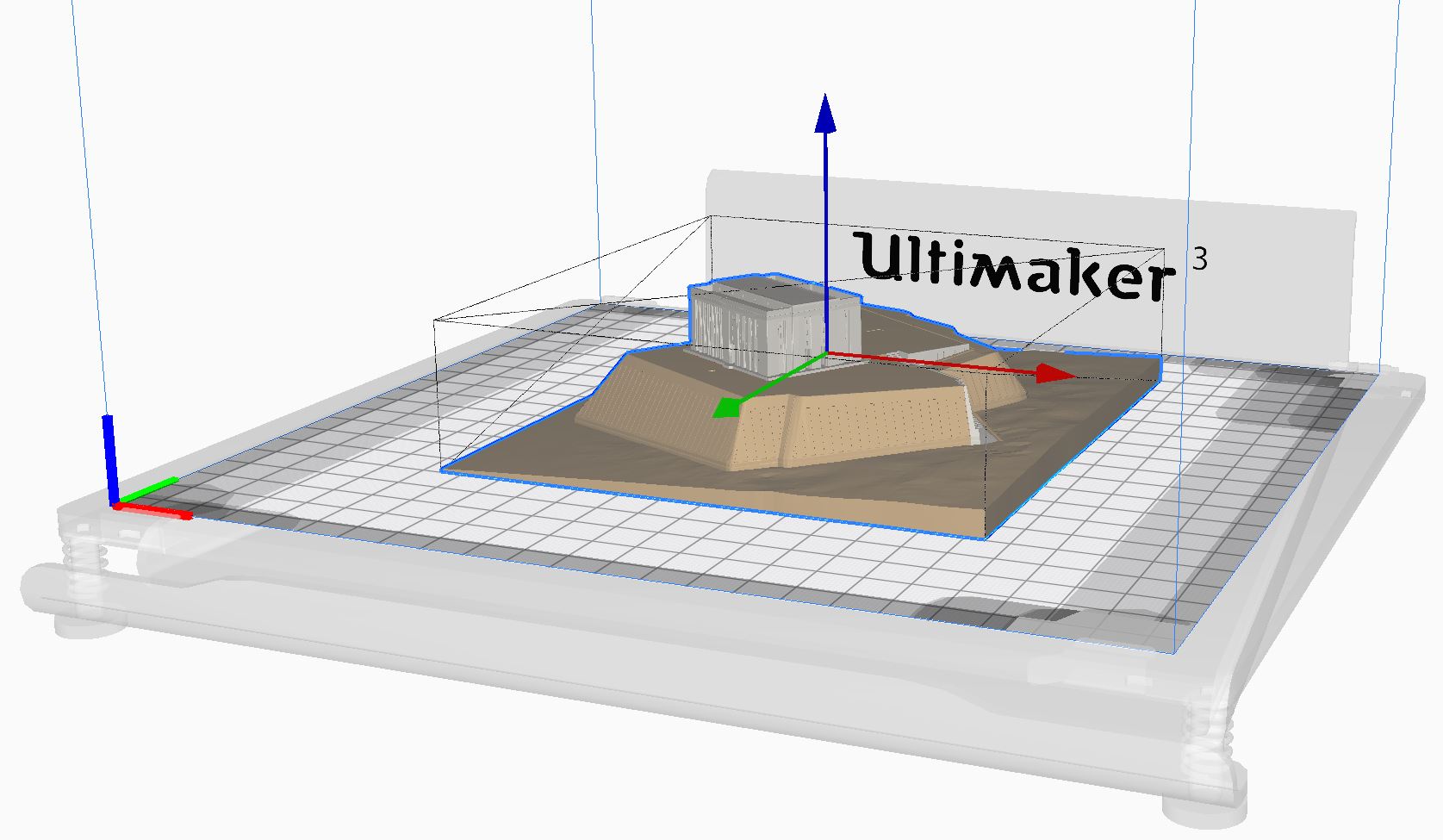Not all models are the same. When we create 3D visualisations, we build (model) these virtual data in a way, that is helpful to us when creating stills or animations. Sometimes, we build only certain views and sometimes we need to be very exact when we create our models and add a lot of detail. It all depends on the use in the end. So a while ago, we reconstructed the White Temple of Uruk for the big Uruk exhibition of 2013/14. The model did get reused even in for the Ana Ziqquratim exhibtion in Strasbourg in 2016.

View from northeast of the two-storey version of the “White Temple” on top of the “Anu Ziggurat”. The main staircase and the temple were painted white.
However, recently we were approached by the Archaeological Museum of Chemnitz (smac) who are creating an exhibition about “the city”, that is planned to open in January 2021. They asked us, if our 3D model is suitable to be printed in 3D, so that people might touch the exhibit. Unfortunately, it is not, so we needed to convert our visualisation model into a printable one. To make a 3D model printable, you need to make it “watertight”, which means there are no holes allowed in the whole model. As you can see in the rendering above, the model is rather complex. Normally small holes do not interfere with the visualisations, but for 3D printing, they are not allowed. Also, as the model needs to be printed in two colours (beige and white), we also needed to create basically two separate models that can be joined again later in the 3D printing software. Here also, both parts of the model (beige and white) need to be watertight.
Another problem are manifold polygons, which basically means polygons that are, but don’t belong. So fortunately, the 3D printing software does make aware of manifold polygons, but when they are very small, it is rather difficult to find them in the 3D model. Fortunately, the 3D modelling software does help with that and highlights problematic sections. So in the end, the work needed to be done was to search and delete all manifold polygons, isolated points and other corrupt topography.
When creating models you don’t always think about other uses immediately. Today, I already have that in mind and I am modelling in a way that not only the model can be printed later, but also that it saves polygons. The fewer polygons you use, the lower the frustration later, when you need to reuse the model in another way.


